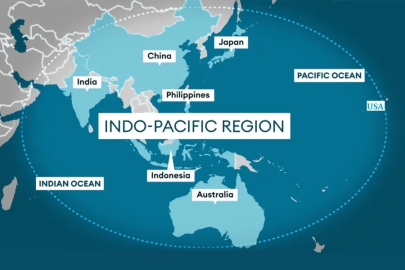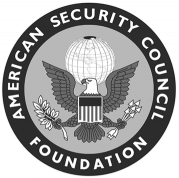Partners in the Indo-Pacific

More than four decades ago, Deng Xiaoping counseled that the PRC should “disguise its ambition and hide its claws.” Xi Jinping has ignored his predecessor’s advice—engaging in the largest peacetime military buildup in history, supersizing his navy, tripling his nuclear force, vowing to conquer Taiwan, making outlandish claims in the South China Sea, constructing and militarizing illegal islands, hacking and sieging the critical infrastructure of America and its allies, lashing out at those who dare defy his regime.
As a consequence of China’s actions, China’s neighbors are awake to the PRC’s ambitions and aware of the PRC’s claws. Xi is beginning to learn that other countries also have claws.
Taiwan
Let’s start close to the PRC and work our way out.
Taiwan let it be known in November that it had received an undisclosed number of ATACMS missile systems from the U.S., which bring PRC coastal staging areas within range. The U.S. is sending Taiwan Switchblade 300 loitering munition systems—a lightweight killer drone that has been used to significant effect by Ukraine against invading Russian forces. In addition, Taipei in December received dozens of M1A2 Abrams tanks and expects delivery of 66 F-16V fighter jets. Taipei is requesting mothballed U.S. warships, F-35 fighter-bombers and additional Patriot air-defense systems.
Interestingly, the United States and Taiwan recently conducted unannounced and “unplanned” naval exercises, as Reuters reports. The exercises, which took place in the Western Pacific, involved half a dozen ships and lasted “days,” sources told Reuters.
India
India just approved a record-setting defense budget for 2025-26. India’s defense budget has increased by 49 percent in the past decade. Indian ports are servicing U.S. warships. U.S. bombers have landed at bases in India. U.S. soldiers have joined Indian troops for exercises just 62 miles from the India-PRC border. U.S. Marines and Indian units just wrapped up large-scale amphibious landings on India’s Kakinada Beach.
Philippines
The Philippines has received multiple batteries of anti-ship missiles from India, both this year and in 2024. It is also taking delivery of coastal-defense ships from Japan. The Philippine Navy recently began training to take over ROK-built guided-missile warships. The Philippine air force is set to receive 20 F-16s from the U.S.
Manila has opened nine bases to U.S. forces and is working with the U.S., Japan and other regional partners to modernize the Armed Forces of the Philippines. In the past 18 months, Philippine troops have trained for amphibious assaults alongside Australian and U.S. troops; the Philippines hosted some 14,000 personnel from more than 20 nations for the Balikatan 25 exercise; Washington announced a “once-in-a-generation investment” of $500 million to modernize and upgrade Manila’s defenses against PRC encroachment; Manila stood up a maritime-monitoring base on the tiny island of Thitu, which sits about halfway between the Philippines’ main islands and the Asian mainland; and Canada, France and New Zealand have hammered out Reciprocal Access Agreements (RAA) with Manila (RAAs enable each nation to deploy military assets on the other’s territory).
Manila is serious about resisting Xi’s assault on Philippine sovereignty: Philippine Defense Secretary Gilberto Teodoro has labeled “Chinese expansionism” as “the greatest external threat.” He vows that his country “will take a combination of measures singularly and with like-minded nations to counteract” PRC aggression, adding: “We have formulated contingency measures to respond.”
Japan
Doubling its investments in defense, Japan will boast the world’s third-largest defense budget by 2027 (behind only the U.S. and China). Japan is beefing up defenses on its island territories (F-35Bs on Kyushu, anti-ship and air-defense units on islands south of Kyushu, a modern airfield for Japanese and U.S. jets on Mageshima Island, and air-defense and missile-defense units on Yonaguni Island, which sits just east of Taiwan).
Japan deploys two aircraft carriers armed with F-35Bs; fields a fleet of 22 attack submarines; and is acquiring 500 Tomahawk cruise missiles. Tokyo will deploy the first batch of Tomahawks later this year.
Plus, Japan is providing arms and training to Indonesia, Vietnam, and the Philippines; hosting air exercises with India; partnering with Britain and Italy to develop a sixth-gen fighter-bomber; and entering into RAAs with the Philippines, Britain and Australia.
South Korea
South Korea’s defense spending has jumped 27 percent since 2020. In late 2024, Seoul announced it was dispersing its top-of-the-line F-35s across the country to enhance defense capabilities. (South Korea will soon have a fleet of 60 stealthy fighter-bombers.) And South Korea is steaming ahead with plans to build a homegrown aircraft carrier, which will deploy F-35Bs.
During a historic summit in 2023, the leaders of the U.S., South Korea and Japan unveiled a system to “coordinate their responses to regional challenges, provocations and threats” and committed to annual trilateral military exercises. The trio held the first of those exercises last year—a series of air-sea exercises. Also in 2024, ROK military units deployed to Australia for joint exercises.
Australia
Australia made historic investments in defense spending this year. Some of those resources are being poured into development of a fleet of Australian nuclear-powered submarines (an effort backed by the U.S. and Britain under the new AUKUS alliance). Some are being spent on missile systems. And some are being used to beef up Australia’s air power: Canberra announced late last year that it had taken delivery of its full allotment of 72 F-35As.
Australia has opened its territory to long-term rotational deployments U.S. Marines, U.S. submarines, U.S. F-22s and U.S. B-52s. Australia is holding bilateral exercises with India and leading large-scale maritime exercises with its fellow Quad partners. (The U.S., Japan, Australia and India comprise the Quad.) And in late 2024, Australia welcomed 19 partner nations for massive air exercises bringing together 4,400 personnel and 140 aircraft in the skies over northern Australia.
NATO
Even as they rebuild and retool to deter a resurgent Russia, our NATO allies are lending a helping hand—and brandishing their claws—in the Indo-Pacific.
The Royal Navy just commenced a globe-spanning mission. With the aircraft carrier HMS Prince of Wales leading an armada of allied warships from the Mediterranean Sea all the way to the Pacific, it’s the largest deployment of British naval airpower in a quarter-century.
France has 7,000 troops, 20 warships and dozens of warplanes based in the Indo-Pacific. Last year, it even deployed fighter jets to the Philippines.
Late last year, Italy’s Cavour carrier strike group carried out a four-day exercise in the Philippine Sea, joined by U.S. Navy destroyer USS Dewey. A year ago this month, Dutch warships joined U.S. warships for exercises in the South China Sea. All told, British, French, Italian, German, Dutch, Canadian, and Spanish assets have joined the U.S. Navy in ensuring freedom of navigation in the Indo-Pacific and/or through the Taiwan Strait.
That brings us to the signals America is sending—and the claws America is showing—in the Indo-Pacific. In the next issue, we will discuss the crucial role America plays in keeping the Pacific stable and secure.




